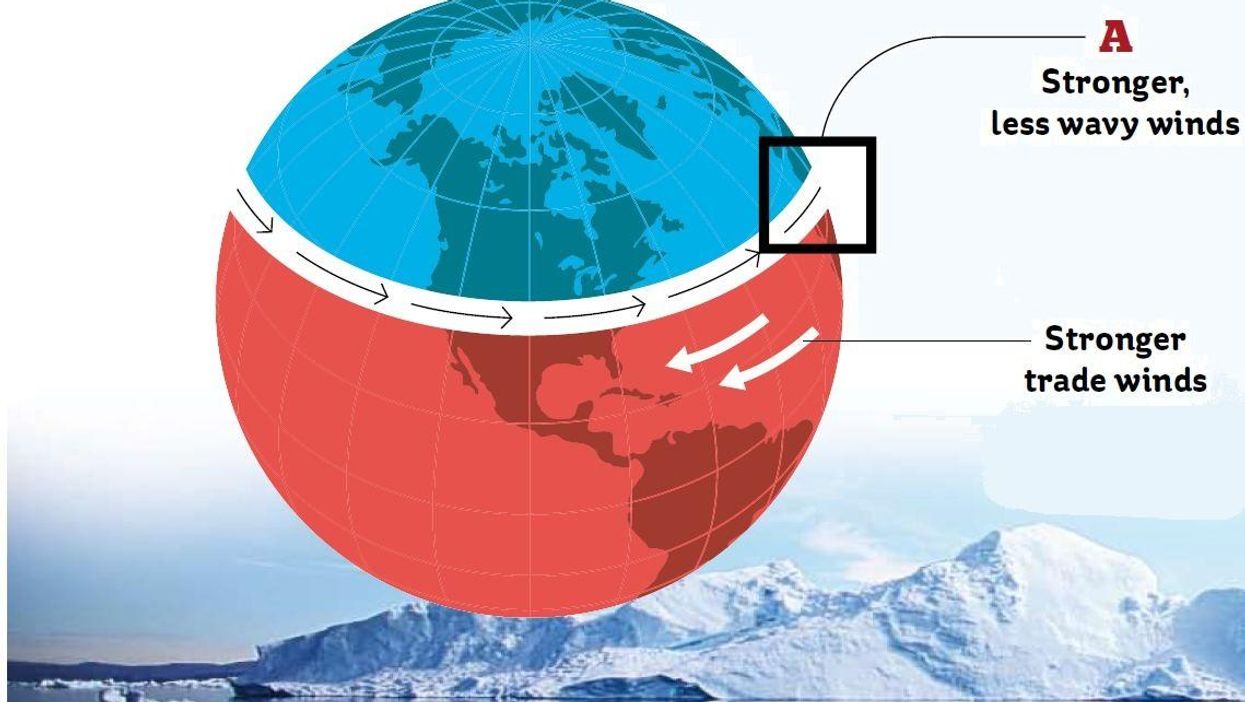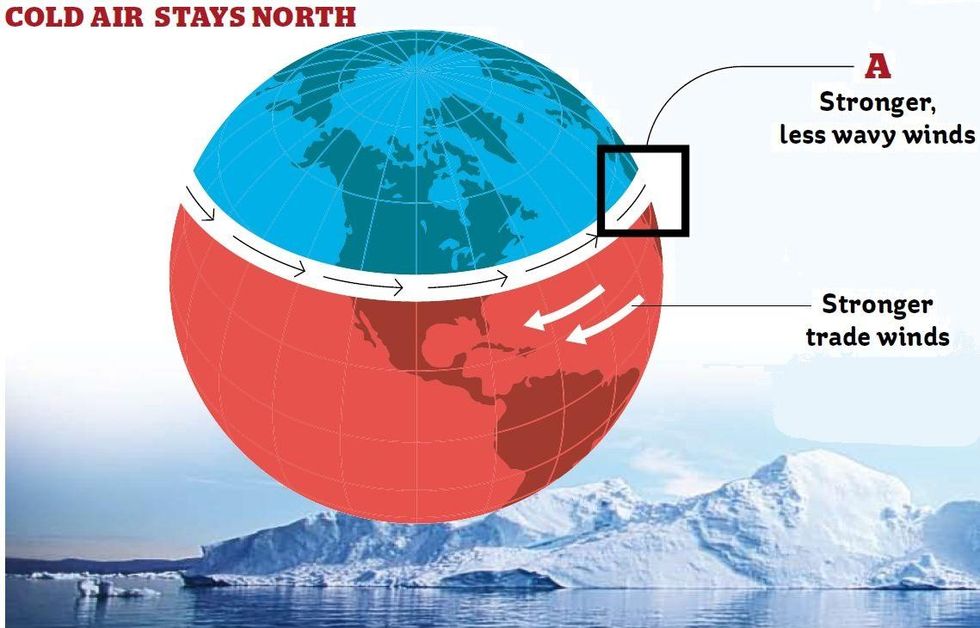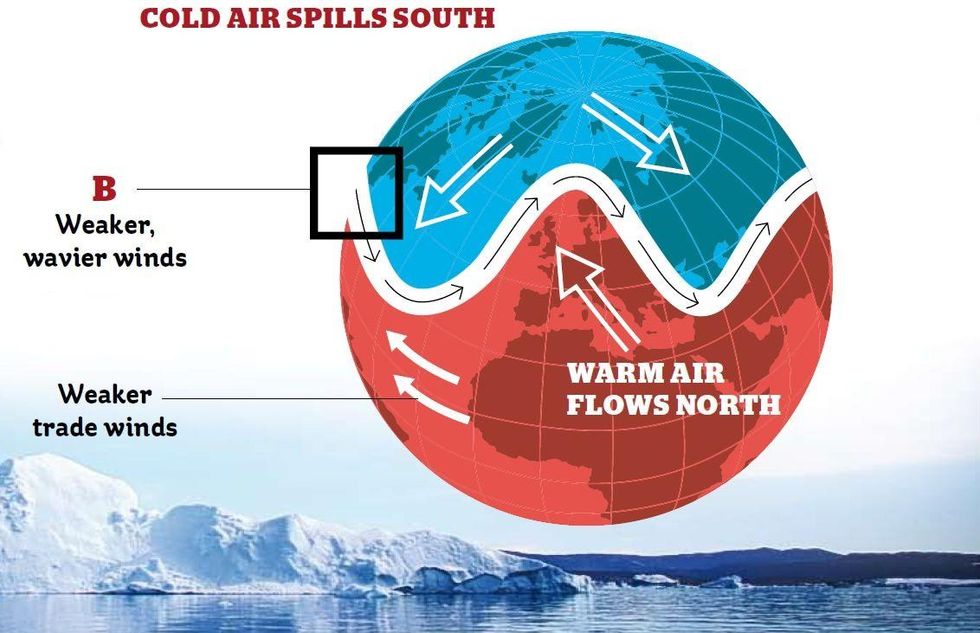News

Weather extremes currently being experienced in the northern hemisphere could be linked to the rapid rise in Arctic temperatures, a group of scientists has claimed.
Temperatures in the Arctic have risen twice as fast as the rest of the world since 2000 and this could have triggered changes in the world's wind patterns.
Research published in the Proceedings of the National Academy of Sciences found the loss of sea ice may be contributing to a wide north-south swing in high-altitude winds which in turn affects the distribution of warm and cold air.
Positive phase
The flow of the high-altitude winds from west to east is strong and sos does not oscillate widely from the north to south.
This keeps a firm boundary between cold northerly air and warm southerly air, resulting in relatively stable weather.
Negative phase
Wide oscillations in the high-altitude winds bring more extreme weather which tends to become fixed for longer periods causing droughts or floods.
Melting Arctic ice is believed to weaken the high-altitude winds, causing wider oscillations and "standing waves".
More: This kink in the jet stream explains why it’s so darn hot right now
More: Is Hurricane Bertha going to hit the UK? Nobody really knows
Top 100
The Conversation (0)















